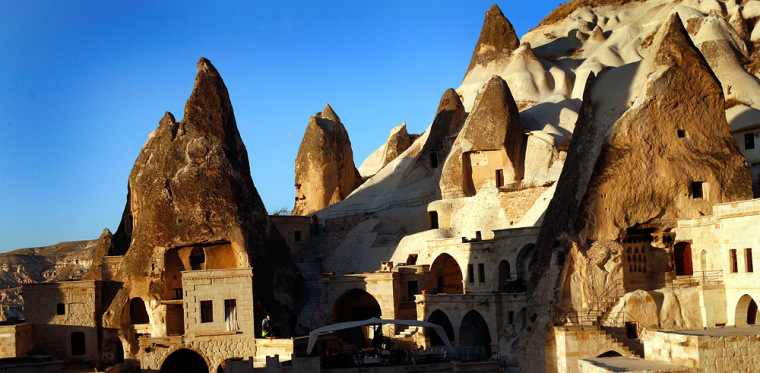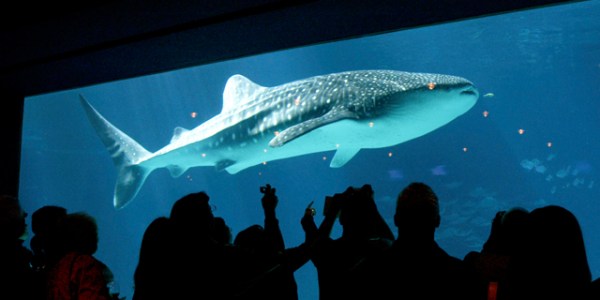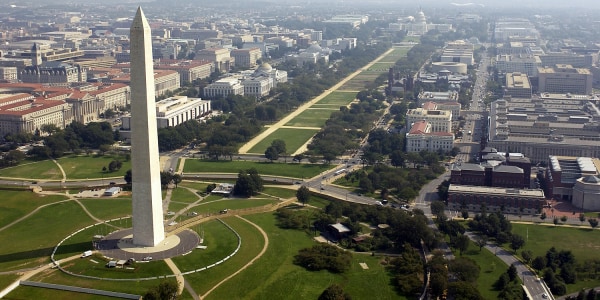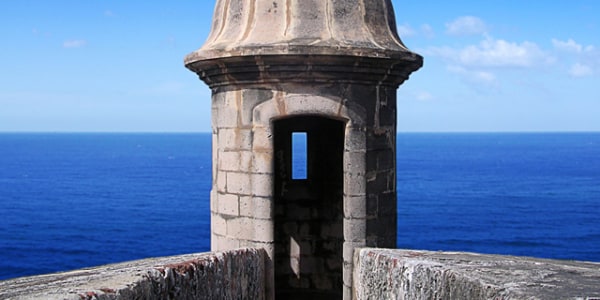When our editors got into a room to hash out our top 29 travel picks for 2009, we realized just how much the economic, social, and political changes of 2008 have sculpted the travel landscape for the coming year.
The rising cost of air travel, the global economic crisis, and the fluctuating dollar made once-popular destinations in Europe out of reach for many of us. New hotspots, like South America, emerged, as their exchange rates offered visitors more bang for their buck. Heightened interest in “going green” meant more focus on eco-friendly tourism and great-outdoors vacations than ever before. And let’s not forget the historic presidential election of Barack Obama, which has sparked Washington, D.C.’s massive resurgence as a tourism destination.
Underpinning all of this, however, is a renewed emphasis on great-value vacations — something we at ShermansTravel know all about. Our editors brought their dollar-savvy expertise and collective travel mileage to the office globe to cast a wide net of 29 places to go in 2009, nearly all of which offer a good degree of affordability in addition to unique, memorable travel experiences.
While we haven’t left a worldwide stone unturned in our quest for the best of 2009, we’ve also devoted more coverage than usual to close-to-home getaways right here in the United States, so that you can forego airfare altogether in favor of quick road trips or hitting the rails instead. Indeed, one of the best deals going these days is Amtrak’s great-value USA Rail Pass, whose benefits have only recently been made available to U.S. citizens.
So remember: While you may have less travel budget in 2009, there are still plenty of places to discover that won’t break the bank. Get out and explore these 29 places before the crowds do ... in 2010.
United States & Canada
1. Atlanta
A modern, cosmopolitan destination with well-maintained historical roots (M.L.K. was born here), this Southern belle of a city can charm even the most jaded of visitors with its grade-A Southern hospitality, impressive arts and music scene, and plethora of attractions. Catch a sporting event, tour historical landmarks dating from the Civil War to the Civil Rights Movement, visit the world’s largest aquarium, get behind the scenes at the Coca-Cola factory or CNN Studios, or kick up your adrenaline a notch at an area theme park.
Why go in 2009: Atlanta’s art and hotel scenes are getting ready to explode. Plan a visit for two blockbuster exhibitions on King Tut and the Terracotta Army, on display well into spring —it’s the first time these two exhibits have simultaneously showed in one city. Even the French are taking notice of Atlanta: The High Museum of Art’s “The Louvre and the Masterpiece” exhibit is set to showcase on-loan Louvre masterpieces until early September.
Slideshow 9 photos
Hot town rising
On the hotel front, two more W hotels are joining the cityscape, crowning Atlanta as the city with the most W Hotels after New York, while a new Hotel Palomar (www.hotelpalomar-atlanta.com) and St. Regis (www.starwoodhotels.com/stregis/index.html) are on the radar for the coming calendar year.
2. A
Austin’s superlative live music scene may have made the city famous, but this hip Texas capital city’s quirky charm extends far beyond its melodic beats. Largely enriched by the dynamic energy of the homegrown University of Texas, Austin boasts the Lone Star State’s best cultural offerings, with numerous galleries, museums, and music venues (more than 100 in all!) alongside some more unexpected attractions — like the summer congregation of some million bats by the Congress Avenue Bridge — without sacrificing its appealing small-town feel. Combine that with more than 300 sunshine-filled days a year, and it’s little wonder that Austin’s consistently ranked as one of the most livable cities in the U.S.
Why go in 2009: Sure, traveling abroad can be a pricey venture in these trying economic times, but who says you need to leave America to escape it? Austin, whose unofficial motto is “Keep Austin Weird,” offers the American traveler a rare U.S. city vacation destination that’s devoid of the cookie-cutter commercial strips found nearly everywhere else — in fact, all chain and big-box stores (think McDonald's and Walmart) are pleasantly absent from the downtown area, giving way to hundreds of sensational local businesses that can only be experienced in Austin. What's more, some exciting new music festivals are slated for autumn 2009: Look for the Texas Wine & Song Festival (www.texaswineandsong.com) in October and the punk and indie rock Fun Fun Fun Fest (www.funfunfunfest.com) in November.
3. Bucks County
Immediately north of Philadelphia and across the Delaware River from New Jersey, rustic Bucks County, Pennsylvania, is a quaint countryside retreat known for charming B&Bs, country inns, covered bridges, serene vineyards, and beautiful colonial estates.
Spend an afternoon discovering the shops, art galleries, and taverns of New Hope, Doylestown, and Yardley — or visit nearby Valley Forge, the site of George Washington's Revolutionary War encampment. If the kids are in tow, head to Sesame Place — home to Big Bird, Elmo, and Oscar, or take them tubing on the Delaware River.
Why go in 2009: Located just 1.5 hours from New York, 2.5 hours from Baltimore, and less than an hour by car from Philadelphia, Bucks County makes an easy one-tank trip — and most of its B&Bs are more affordable than those in the New England countryside (trust us, they’re just as quaint). Many regional travelers are already familiar with New Hope, but less-commercial Doylestown is coming into its own, with a tree-lined downtown district full of unique shops and restaurants and a vibrant cultural scene anchored by the eclectic Mercer Museum and the James A. Michener Art Museum, which hosts a “Jim Henson’s Fantastic World” exhibition in fall 2009. Meanwhile, in Langhorne, Sesame Place will open the largest attraction in its history, The Count’s Splash Castle, come spring.
4. and Hudson Valley
Just a quick jaunt north of Manhattan, the Catskills region, New York’s hipster- and hippie-haunted mountain playground, and the neighboring historic Hudson River Valley — home to the state capital at Albany, West Point, and historic estates of the Rockefeller and Roosevelt ilk —together provide a well-rounded, four-season destination for New Yorkers and visitors alike. From skiing to river tubing, and wine-tasting to antiques shopping, this scenic expanse of rolling valleys, forested mountains, and the rushing Hudson River doles out the perfect blend of outdoor adventure, historical sites, and charming towns.
Why go in 2009: The 40th anniversary of the momentous Woodstock Festival will draw visitors to explore both the festival’s artsy namesake town and the site of the original 1969 event at the modern-day Bethel Woods Arts Center, where visitors today can catch al fresco concerts and peep into the newly dedicated Woodstock Museum, which masterly documents the festival and its surrounding 1960s social and political movements. Meanwhile, the magnificent Mohonk Mountain House (www.mohonkanniversary.com), a grand Victorian castle resort (and National Historic Landmark) set on pristine forested grounds by Lake Mohonk, just north of New Paltz, is celebrating its 140th anniversary with promotional packages, seasonal galas, and more. Last but not least, the 400th anniversary of New York’s founding by Dutch explorer Henry Hudson (www.hudson400.com) will be commemorated with special events like the Relay Flotilla in June, set to retrace Henry Hudson’s river trajectory from Manhattan to Albany — look for promotional packages to coincide with the quadricentennial, like those being offered by the upscale Emerson Resort (www.emersonresort.com) in Mt. Tremper.
5. Great Smoky Mountains National ParkThe most visited national park in the U.S., the Great Smoky Mountains (a western segment of the high Appalachians) boast over 500,000 acres of pristine forest and diverse wildlife that includes foxes, deer, elk, and some 1,500 resident black bears. Nestled between North Carolina and Tennessee, park visitors have access to 800 miles of hiking, biking, and horseback riding trails; scenic campsites; historic cabin museums that serve to recount pioneer history; and popular auto-tour loops, like those along Cades Cove — all of which are shrouded in the misty-blue haze that gave name to “The Smokies.”
Why go in 2009: With American travelers forecasted to plan more trips to national parks this year, the Great Smoky Mountains offer one of the country’s most cost-efficient vacations in the great outdoors. Admission to the park is always completely free, and as this year marks the 75th anniversary of its founding (www.greatsmokies75th.org), many additional complimentary activities are planned, including musical performances and special ranger-led programs.
6. Northwest Passage
For centuries, this icy Arctic Ocean route — which connects the Atlantic and Pacific Oceans atop North America — proved to be unconquerable terrain. In fact, the first sea passage wasn’t completed until 1906 (and it took a Norwegian explorer three entire years!) Now, some hundred years later, due to the melting ice cap effect of global warming, you can be among the first to witness this slice of the Arctic’s stunning glaciers and wildlife, like arctic wolves and polar bears. Several expedition cruise companies have launched summer itineraries in the region, which include excursions like sea kayaking and visits to remote northern villages.
Why go in 2009: Go now — before continued global warming and government sanctions make this stellar destination a thing of the past. During a brief window from August to September, cruises along the top of the world can be booked on operators like Hapag-Lloyd (www.hapag-lloyd.com) — try their extensive 25-day sailing between Kangerlussuaq, Greenland and Nome, Alaska — or, book the shorter 13-day outing between Edmonton and Ottawa (requiring flight transfers) offered by Peregrine Adventures (www.peregrineadventures.com). We recommend booking at least nine months in advance — while this is one of our list's priciest destinations, it’s also in the most limited supply.
7. Sarasota
A bay-front community flanked by picturesque keys, Sarasota lies just 60 miles south of Tampa and is home to the 66-acre Ringling (of circus fame) historic mansion and art museum, orchid-filled botanical gardens, and over 50 golf courses. With year-round sunshine, visitors come for the miles of white-sand beaches, but stick around for the vibrant arts scene, wildlife-rich nature preserves, and wide range of activities ranging from kayaking to flying trapeze classes. Shoppers can indulge in everything from the antique to boutique, while foodies’ dining options run the gamut from local seafood shacks to award-winning gourmet eateries.
Why go in 2009: Happily overlooked by hordes of spring breakers, this up-and-coming Florida retreat offers both luxurious tranquility and beachfront family fun. Siesta Key Beach was recently named the third best beach in the U.S. by coastal expert “Dr. Beach,” making it a must for beach lovers in 2009. While in town, check out the Hyatt Regency’s (www.sarasota.hyatt.com) $22 million dollar renovation, including new waterfront restaurant Currents. Also take advantage of the tourism board's “Beaches and Baseball” lodging deals and local fanfare planned for spring 2009, the last training season the Cincinnati Reds will spend in Sarasota.
8.
The U.S. capital and elegant epicenter of American history, politics, and culture, Washington, D.C. exudes a captivating combination of history and hip, constantly morphing with new attractions, and emitting a tangible aura of power that can be felt just by strolling the broad boulevards. Check out this melting pot’s multi-cultural neighborhoods, stroll Embassy Row, ogle mind-blowing monuments, bar-hop downtown, or see how many free museums you can visit in a day.
Why go in 2009: Head to the capital and get more bang for your buck while witnessing history in the making. The year's hottest ticket — the January 20 Presidential Inauguration — will be preceded by five days of inaugural balls and parties and is expected to draw some two million people. Martin Luther King Day lands on January 19, a holiday which brings its own set of D.C. celebrations — and its own special meaning in ’09.
Abraham Lincoln’s bicentennial coincides with both of these landmark dates — beginning January 1 and running through April 30, the planned “Living the Legacy: Lincoln in D.C.” celebratory program (www.washington.org/lincolnindc) includes more than 75 exhibitions and special events. To top it all off, D.C. offers particularly good value, including free admission to the popular zoo and all of the stellar Smithsonian museums.
9.
Skiers and boarders searching for heavenly pistes needn’t look further than the coastal mountains of British Columbia. Canada's top winter resort boasts truly tremendous powder, which is why Whistler is hosting most of the ski events during 2010's Winter Olympic Games. With 33.5 feet of average snowfall per year, this winter-sports mecca offers conditions tailor-made for snowshoeing, tubing, and backcountry adventures, along with an extended ski season lasting from November through June. Come in the warmer months, and you’ll discover a top destination for mountain biking, zip-trek eco tours, whitewater rafting, and more.
Why go in 2009: Although the event is still one year away, Whistler visitors in 2009 will have the chance to preview some Olympic glory before the games. Construction on all main Olympic venues is now complete (some facilities are open for touring), a handful of new lodge and hotels have opened their doors (we like the Evolution Whistler; www.evolutionwhistler.ca), and a high-tech gondola debuts in December. More exciting still will be the chance to ski like a champion down real Olympic runs or to witness winter sports excitement at F.I.S. World Cup events. Best of all, Whistler vacations offer terrific value over comparative experiences at Western U.S. ski resorts, with cheaper lodging options and a strong U.S.-to-Canadian-dollar conversion.
10. Willamette Valley
Located about an hour’s drive south of Portland and spread out on the banks of the Willamette River, this up-and-coming wine region has been making waves of late in wine glasses across the nation. Billing itself as the "place for pinot,” this slumbering grapevine district is home to more than 200 wineries, most of which beckon visitors with tasting rooms and even eco-wine tours. Visitors can also opt to take in the vineyard-covered landscape from a hot-air balloon ride, trot along farm-dotted trails on horseback, or take home a one-of-a-kind find from one of the many antique shops.
Why go in 2009: Although enthusiasts forecast that this area will be the next Napa Valley, the less-commercialized Willamette Valley remains — for now — a much more affordable vino-centric destination than its southerly California neighbor. Plus, new developments are on the horizon for those looking for an alternative to the area’s charming B&B circuit — in August, for one, the region’s first luxury inn, The Allison Inn & Spa (www.theallison.com), will be unveiled, featuring extras like a restaurant dishing out regional cuisine and a working vineyard.
Caribbean & Mexico
11.
Commonly misconceived as a Caribbean island, Bermuda is actually an Atlantic one, with a location that’s closer to Washington, D.C. than it is to points south. As a result, like much of the northern United States, this balmy British isle kicks into high-season in summer — while other islands of its ilk are becoming too hot to bear. With its fantastic golf, charming historical cities, gorgeous bougainvillea, splendid pink-sand beaches, and endearing pastel-colored houses, Bermuda attracts a loyal following of repeat visitors. Plus, its proximity to the United States makes it ideally suited for a quick getaway — at around two hours from the East Coast, you can be there by lunch.
Why go in 2009: Bermuda turns 400 in 2009 (www.bermuda2009.bm) and is commemorating the historic event with a bevy of promotions and special events. Helping to bring affordability to the costly island is the Department of Tourism’s “Compliments of Bermuda: 400th Anniversary Offer,” which gives up to $400 credit towards air-and-hotel bookings made at select hotels (travel through March 31; book by March 27), as well as a “400th Anniversary Passport” savings booklet valued at up to $1,000. Meanwhile, event highlights include the Tall Ships Atlantic Challenge 2009 in June and the Bermuda Festival For The Performing Arts in January and February. Also of note: The upscale, all-suite Newstead Belmont Hills Golf Resort & Spa (www.newsteadbelmonthills.com) opened its doors in early 2008, while the exclusive Tucker’s Point Hotel & Spa (www.tuckerspoint.com) is set to debut in April 2009.
12. Curaçao
Sophisticated Curaçao, the largest of the Dutch-owned ABC islands (Aruba and Bonaire form the “A” and “B”), may lack its neighbors’ high-caliber beaches and dive sites, but its capital, Willemstad, ranks among the region’s most cosmopolitan cities, with some 55 different cultures living in its vicinity — in fact, it’s the only Caribbean city aside from Havana to be ranked a UNESCO World Heritage Site.
{
"type": "Slideshow",
"element": null,
"html": null,
"ecommerceEnabled": false
}13.
Founded in 1521, San Juan is not only the political and cultural capital of Puerto Rico, but it's the United States' very oldest city. At turns charming and gritty, historical Old San Juan and the sugary, resort-laden Condado and Isla Verde beachfronts woo visitors — moving away from the sand, urban sprawl and factories dominate. Combine your trip with escapes to off-the-coast islets like Vieques and Culebra for a truly unforgettable Caribbean experience.
Why go in 2009: When it comes to quick, affordable beach and cultural getaways, few destinations rival San Juan, which is less than a three-hour flight from Miami or under five hours from New York.
Slideshow 12 photos
Picturesque Puerto Rico
Combine short flying times with cheap flights — low-cost carrier JetBlue offers non-stop service from several East Coast cities (with a new D.C. route launching in December), while American Airlines operates its Caribbean hub there, making for competitive pricing. What’s more, no passport is required for travel — and with the historic district of Old San Juan delivering a winning combination of European culture with Caribbean charm, it's a chance to indulge in an affordable taste of Europe right here in the Americas.
14.
The beautiful white-sand beaches and turquoise sea fronting Riviera Maya (a.k.a. the Mayan Riviera) — stretching south roughly 80 miles from Cancún, on past Tulum, and into the Sian Ka'an Biosphere — allow visitors to combine a tropical beach vacation with visits to awe-inspiring ruins and a UNESCO World Heritage nature preserve. Head here for the perfect combination of relaxation and culture in the form of beaches, resorts, and historic ruins.
Why go in 2009: Part of the allure of Mexico has always been is its affordability. In 2009, this truth will extend to airfare with the launch of several new, inexpensive routes to Cancún (the gateway to Riviera Maya), including AirTran's upcoming service from Baltimore and Atlanta in February, and JetBlue's new flights via D.C. and Tampa in December 2008.
Slideshow 11 photos
Marvelous Mexico
That's not to say that affordability comes at the cost of class — a number of new upscale properties are planting roots in the Mayan Riviera, including the recent opened Mandarin Oriental (www.mandarinoriental.com/rivieramaya), and the upcoming Nizuc (www.nizuc.com), scheduled for debut in fall 2009.
Europe
15.
Packed with cultural treasures, hip nightclubs, cutting-edge dining options, and no less than three opera houses, Berlin is Europe's first true 21st-century metropolis. Yet, even after two decades of German reunification, its rechristened capital still has the feel of a city on the verge: Berlin's art scene rivals that of London, except you can actually afford to buy a painting from the local galleries.
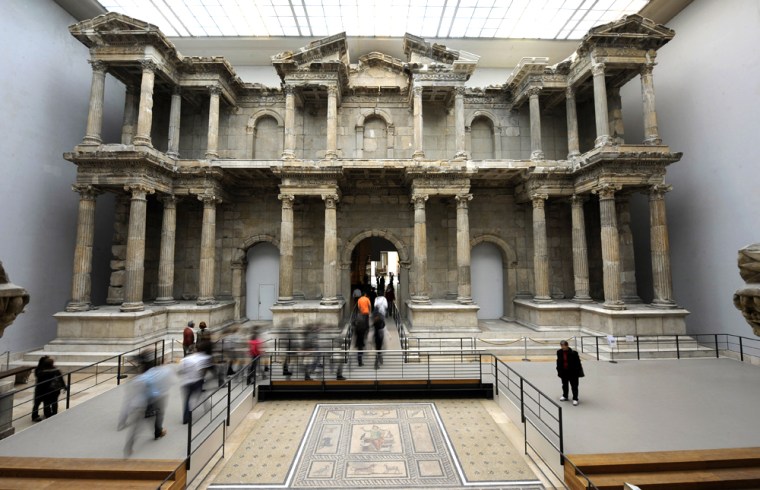
A spurt of innovative restaurants could be the envy of Paris, but their reasonable prices are distinctly un-Left Bank. The same holds true for accommodations: new, cool, and refurbished hotels abound, but again, at rates nowhere near those of other European capitals. The city's immense affordability is one reason to visit, but its outsized art collections, fascinating history, trendy neighborhoods, and teeming nightlife are what will keep you captivated while you're there.
Why go in 2009: While we'd gladly visit Berlin every year, 2009 gets special dibs, as November 9 marks the twentieth anniversary of the fall of the Berlin Wall. A series of special commemorative events are planned throughout the year (www.mauerfall09.de), with the city's open spaces, buildings, and museums serving as the celebratory focal points — visitors can expect to see facades tricked out with light installations, specially commissioned public art displays, and exhibits focused on the history of the wall itself. The festivities culminate with a grand celebration at the Brandenburg Gate, complete with artistic performances, concerts, and a street festival, on November 9.
16. Cappadocia
Located in the center of Turkey, approximately 450 miles from Istanbul, Cappadocia is a Salvador Dali painting come to life. This bizarre, lunar-like landscape is dotted with extraordinary “fairy chimney” rock formations, dramatic gorges, troglodyte houses, subterranean chapels, underground cities that once sheltered early Christians, and exquisite hotels carved out of the area’s abundant soft stone. Make pottery in Avanos, go wine-tasting in Urgup, and rise with the lark and take to the skies in a hot-air balloon for a bird's eye view of Goreme National Park’s dramatic valleys and conical rock formations.
Why go in 2009: Most American tourists are still reluctant to venture beyond Istanbul and Turkey’s Mediterranean coast, so go now before word spreads that Cappadocia has reached beyond backpackers and archeology buffs to appeal to a more luxury-minded set. The Serinn House (www.serinnhouse.com), a boutique design hotel in Urgup with just five rooms (when was the last time you stayed in a Wi-Fi-equipped cave?), opened in early 2007. Also, due to the favorable exchange rate (though Turkey aspires to adopt the euro and join the European Union, the Turkish lira will remain in circulation through 2009), Turkey is both exotic and affordable.
17.
The name may suggest a barren, frigid land, but Iceland offers some of the most awe-inspiringly diverse landscapes on the planet. A single day’s travel will uncover volcanoes, endless waterfalls, glaciers, geysers, geothermal hot springs, cold deserts, northern lights, and moonscape landscapes. Reykjavik, the nation's capital city, has an intimate population of fewer than 200,000, yet boasts a brag-worthy nightlife and shopping district. Plus, with flights from the Eastern seaboard lasting just over five hours, it's the closest sampling of European culture you can get.
Why go in 2009: After a near brush with bankruptcy in late 2008, the value of the Icelandic krona has dropped dramatically, making this once expensive destination affordable for American tourists — look for highly discounted vacation packages and airfares through providers like the country’s flagship carrier, Icelandair. While any major new tourism infrastructure developments are expected to be put on hold as the economy attempts recovery, the benefits of enhancements made in recent years can still be reaped, including road improvements that now allow travelers access to some of the country’s more remote pristine pockets.
18.
Montenegro has come a long way since its shaky days following Yugoslavia's breakup. With medieval cities and ancient monasteries, over 200 miles of coastline, a plethora of beaches, soaring Dinaric Alps, four national parks, and two UNESCO World Heritage Sites, this gem of a country — often overshadowed by fashionable neighbor Croatia — offers travelers a spectrum of outdoor and cultural experiences — at much more reasonable rates.
Why go in 2009: Currently ranked as the second fastest growing tourism market in the world (falling just behind China), you’ll need to head here fast, before rates rise to match Montenegro's mounting popularity. Luckily, travel will be easier than ever as of June 2009, when Montenegro Airlines expands its service to Tivat via London Gatwick. Meanwhile, Aman Resorts (www.amanresorts.com) is slated to celebrate the opening of its newly branded Sveti Stefen island resort, a former fishing village and modern-day celebrity retreat that closed for the Aman takeover and luxury makeover last year. This highly anticipated development has consequently sparked other luxury hotel negotiations in the region (the Four Seasons among them), as well as the pending transformation of Tivat's Port Montenegro into a marina for mega yachts.
19. Sardinia
The second largest island in the Mediterranean (situated southwest of mainland Italy), Sardinia — historically influenced by Phoenician, Greek, Carthaginian, and later, Roman rule — stands out for its warm hospitality and charm. As you explore — whether by biking, hiking, horseback riding, sailing, or riding in an antique train — you'll discover ancient ruins, exquisite wines, fresh local cuisine (think ricotta and suckling pig), and over 1,000 miles of soft white-sand beaches fronting turquoise waters. Base yourself in the northeastern part of the island at Costa Smeralda, a celebrity magnet renowned for luxury hotels, high-end boutiques, and expensive real estate, or in Budoni, an emerging seaside destination of just 4,000 residents.
Why go in 2009: Sardinia remains largely off the radar for non-Italian travelers and noisy tourism developers alike, offering vacationers better value and more seclusion than other Italian hotspots. But it’s only a matter of time before all of that changes — Chia Beach, on the southern, less-developed part of the isle was recently named one of the best European beaches of 2008 by readers of the U.K.'s Daily Telegraph, and low-cost European airlines continue to increase service to this once not-so-accessible isle (Jet2.com, for one, is launching an Edinburgh to Olbia route come May).
20. Warsaw
Warsaw today is a testament to the perseverance, strength, and, ultimately, revitalization of Poland. The capital city, once beaten down by two iniquitous powers — the Nazis and the Soviets — which both attempted to strip the Poles of their heritage, culture, and beliefs, has reclaimed its legacy, rebuilt and restored its landmarks, and looks to the future as a proud and dynamic city. Holocaust survivors and former down-and-out Varsovians mingle with a bright, progressive youth. Bullet holes embedded in surviving WWII buildings stand not far from drab Soviet-era blocks and shiny new skyscrapers, while the UNESCO-listed Old Town, really a 50-year-old imitation of the bombed-out original, draws unapprised tourists who like its Prague-like charms.
Why go in 2009: Poland uses the zloty, making affordability a major draw here over other European cities that are now on the euro. Aside from giving visitors a good dose of WWII and Red history, Warsaw boasts a burgeoning after-dark scene in up-and-coming neighborhoods like Fabryka Trzciny, the old part of the Praga district, where the latest in the city's reinvention is showcased with new galleries and restaurants. The superlative nightlife landscape pours out over the whole of Warsaw, too, with a blend of boho bars, clubs housed in unusual spaces (be it a former fort or art museum), underground discos, and hip cafes. Don’t miss popping into one of the few remaining, and somewhat controversial, Communist-era "milk bars" for cheap pierogies and borscht.
Central & South America
21. Bogotá
Bogotá is standing tall — and not just because its perch in the Andes makes it the third highest capital in South America. According to the U.S. State Department, “violence has decreased markedly” in Colombia’s urban centers — the best evidence of this is the revival of Bogotá’s oldest neighborhood, once-dangerous La Candelaria, a bohemian-flavored enclave that’s home to a maze of colonial streets, a stylish new cultural center, the gloriously restored Teatro de Cristóbal Colón, and candlelit bars buzzing with students until 3 a.m.
Why go in 2009: The U.S. dollar stretches far and wide in this inexpensive metropolis; even getting here is relatively cheap, especially with low-cost carrier JetBlue, which begins flying a new daily route to Bogotá via Orlando in January. Pay a bit more and you can go non-stop from New York’s JFK on Delta, which launched daily service in August. Go between December and March, when the weather is relatively drier (expect highs in the mid-60s throughout the year).
22.
Charles Darwin put this spectacular archipelago on the map back in 1835, when he came to study the region's 1,900 indigenous plant and animal species. Today, this isolated string of islands, which lies 600 miles off the coast of Ecuador in the Pacific, is still the preeminent wildlife watching spot in the world. People travel from all over to follow in Darwin's footsteps, stopping along the way to explore the active volcanoes, pristine beaches, and mesmerizing wildlife (everything from giant tortoises to blue-footed boobies to seals) that are still as captivating in the 21st century as they were in the 19th.
Why go in 2009: This year marks the 200th anniversary of the birth of Charles Darwin and the 150th anniversary of his masterwork "On the Origin of Species". A number of tour operators, including Explore (www.explore.co.uk), Gecko's Adventures (www.geckosadventures.com), Metropolitan Touring (www.metropolitan-touring.com), and Tauck (www.tauck.com) are offering special deals on cruises, tours, and island accommodations to commemorate Darwin's journey.
23. Salvador
Brazil's third-largest city, Salvador is often called the "soul of Brazil" for its colorful open-air markets, religious festivals, Afro-Brazilian cuisine, Samba and Reggae music, and friendly residents. Once a hub for the slave trade, the city exhibits strong cultural ties to Africa. Home to a number of museums, parks, architectural highlights, and golf courses, Salvador is also ideally situated along Todos os Santos Bay, perfect for working in some beach lounging, visiting "barracas" (beach bars), or surfing. Each year, the city’s massive Carnaval celebration rivals that of Rio’s, drawing some two million people to party in the streets for miles at what’s billed as "the world's largest festival.”
Why go in 2009: If you’re looking for a fresh perspective on Brazil and/or have been priced out of Rio, Salvador is the perfect Brazilian-city-and-beach-vacation alternative. Rio’s Carnaval may get most of the worldwide acclaim, but Salvador’s version not only offers better overall value at lodging and restaurants, but one giant street party to remember — with celebrations along the beaches, music and dancing throughout the city, and a wild float-speckled main parade. What’s more, getting there is easier than ever, courtesy of American Airlines' new non-stop routes to Salvador via Miami. The city is also a port of call that's growing in popularity on great-value South American cruise itineraries from companies like Royal Caribbean and Crystal Cruises.
Asia & Middle East
24. South Korea
In just two decades, South Korea has emerged as a stable democratic country with big ambitions. The bustling megacity of Seoul embodies the nation’s new spirit, where towering skyscrapers and posh department stores are interspersed with venerable imperial palaces, traditional teahouses, and centuries-old Buddhist temples. Ancient Gyeongju, meanwhile, offers a glimpse into Korea’s 5,000 years of history, and was ranked in 1995 by UNESCO as one of the world’s ten most historically significant places. Nearby, a sunrise climb to the temple-topped peak of Mt. Tohamsan reveals the origin of the country’s moniker, “Land of the Morning Calm.”
Why go in 2009: The South Korean won has lost more than 30 percent of its value against the dollar since just one year ago, giving the American traveler plenty of purchasing power — of particular interest for shoppers looking to pick up brand-name consumer electronics and designer fashions in Seoul. What’s more, the number of international tourists boomed some 12 percent between 2007 and 2008, a trend that’s inspired hotel chains like Wyndham and Intercontinental to set out on expanding its presence in the country in 2009.
25.
Fabulous Tel Aviv, dubbed “the Miami of the Mediterranean,” is easily Israel’s coolest city. Trimmed with gorgeous beaches, loaded with Bauhaus architecture, and populated with smartly dressed locals with a fierce appreciation for art, cuisine, and nightlife, Tel Aviv is the hedonistic antidote to historic, heady Jerusalem, which, even at just one hour away, is a world apart in every respect. Indeed, while Jerusalem is all about the past, Tel Aviv is Israel’s definitive 21st-century flag-bearer, with a regular rotation of new restaurant, hotel, and bar openings, and a superb design-forward sensibility that’s altogether unmatched in the Middle East.
Why go in 2009: Tel Aviv turns 100 in April 2009, making it older than Israel (which celebrated its 60th in 2008). While the city never needs an excuse to party, visitors can count on an amped-up centennial schedule with eight months of festivities culminating in December. The line-up features fun events like a centennial photo shoot of thousands on the beach in April; a flower carpet in Rabin Square in September; and an international film festival hosted by the Tel Aviv Cinemateque in November. Keep abreast of event schedules at tlv100.co.il and book your room now; the city’s best hotels are bound to book up fast.
(Editor's note: This article was written prior to the recent onset of violence in Israel which started Dec. 27, 2008. At this time, the U.S. Department of State has issued a travel advisory for Israel, the West Bank, and Gaza. For current information about traveling there, please consult the U.S. Department of State's Bureau of Consular Affairs' Web site at .)
26.
A modern, moneyed, Muslim destination with astonishing architecture, cutting-edge pleasure palaces, and tax-free shopping (at least for now), the United Arab Emirates (U.A.E.) is rapidly transforming the Middle East by drawing focus away from distressing regional conflicts and emphasizing care-free commerce and spectacle-fueled tourism. The U.A.E.’s leading star is still Dubai, but capital Abu Dhabi, its more cultured older sister, deserves to share the spotlight.
Why go in 2009: During the decade of feverish growth that followed the opening of self-proclaimed “seven-star” hotel Burj Al Arab in 1999, much has been made about dazzling Dubai’s limits-be-damned luxury and ersatz wonders (palm-shaped islands! indoor mountains!), but all the ado promises to be outdone again when the world’s tallest tower, Burj Dubai (www.burjdubai.com), tricked out with an Armani-branded hotel, opens later this year. New non-stops from D.C. (United), Atlanta (Delta), San Francisco, and Los Angeles (both on Emirates’s A380 fleet) make getting there easier than ever. Combine with a trip to Abu Dhabi, just 105 miles to the southwest, to experience traditional Bedouin and Islamic cultural attractions (but you’ll have to wait for 2012 to peruse the emirate’s Jean Nouvel-designed branch of the Louvre museum).
27. Vietnam
Fascinating Vietnam has finally shed its war-ridden image and recently emerged as one of Southeast Asia’s hottest destinations. Physically stunning, this country of tropical mountains, rice-paddy deltas, and the flowing Mekong River is marked by a unique combination of Vietnamese and French culture (part of the legacy of French colonialism in the 19th and 20th centuries), and a people that welcome foreign travelers with warmth and curiosity. Must-sees include bustling Hanoi, Vietnam’s French-flavored capital; the picturesque jewel box of a town at UNESCO-listed Hoi An; frenetic Ho Chi Minh City, better known as Saigon; and mystical Halong Bay, with its famous limestone islets and enchanting emerald-green waters.
Why go in 2009: The U.S. dollar carries substantial weight in Vietnam, so you can explore without squandering your savings. What’s more, the advent of some major American cruise companies plying the waters off Vietnamese shores has brought a convenient and value-oriented means of exploring the ports of this elongated nation. Royal Caribbean launched its Southeast Asia itineraries in early 2008, and calls upon ports in Ho Chi Minh City, Nha Trang, and more, while the line’s more intimate and upscale sister company, Azamara Cruises, recently followed suit. Likewise, Cruise West is testing the waters with a one-off Vietnam sailing in fall. Meanwhile, Vietnam's race toward Western-style development on the mainland has brought recognizable international brands to everything from hotel chains
(InterContinental debuted its first hotel in Vietnam in Hanoi in 2008 and is slated for a Saigon opening in 2009) to car rental services (Budget Rent A Car just became the first international car rental service in the nation).
Australia & Pacific
28.
Roamed by the feral Tasmanian Devil and the spotted-tailed quoll, Tasmania is, at least in part, an untouched wilderness spanning rainforest, beaches, high mountain plains, and lakes sailed by black swans. Historic towns, fertile farmlands, and pleasant cities also add to its charm, belying a darker side of the island's history, when the land doubled as a detention center for convicts. Travelers head here to experience ultimate adventure and breathtaking scenery.
Why go in 2009: The value of the Australian dollar is at its lowest in five years and is predicted to fall even more within the next few months — bad news for Aussies, good news for U.S. travelers. Now is the time to take advantage of the plummeting Australian currency and to see the primordial beauty of Tasmania without breaking the bank. Worried about the long flight? Don't be. In September, Qantas Airways unveiled its new fleet of spacious A380s — the largest commercial jet in the world — making the transpacific distance seem a little less difficult; note that a domestic transfer to Tasmania is best routed via Melbourne.
Africa
29. Victoria Falls
Most visitors to Zimbabwe come solely with a visit to the Victoria Falls region in mind – the tourism hub of the country, its developed infrastructure and special "tourism police" make it a comfortable and secure base for tourists.
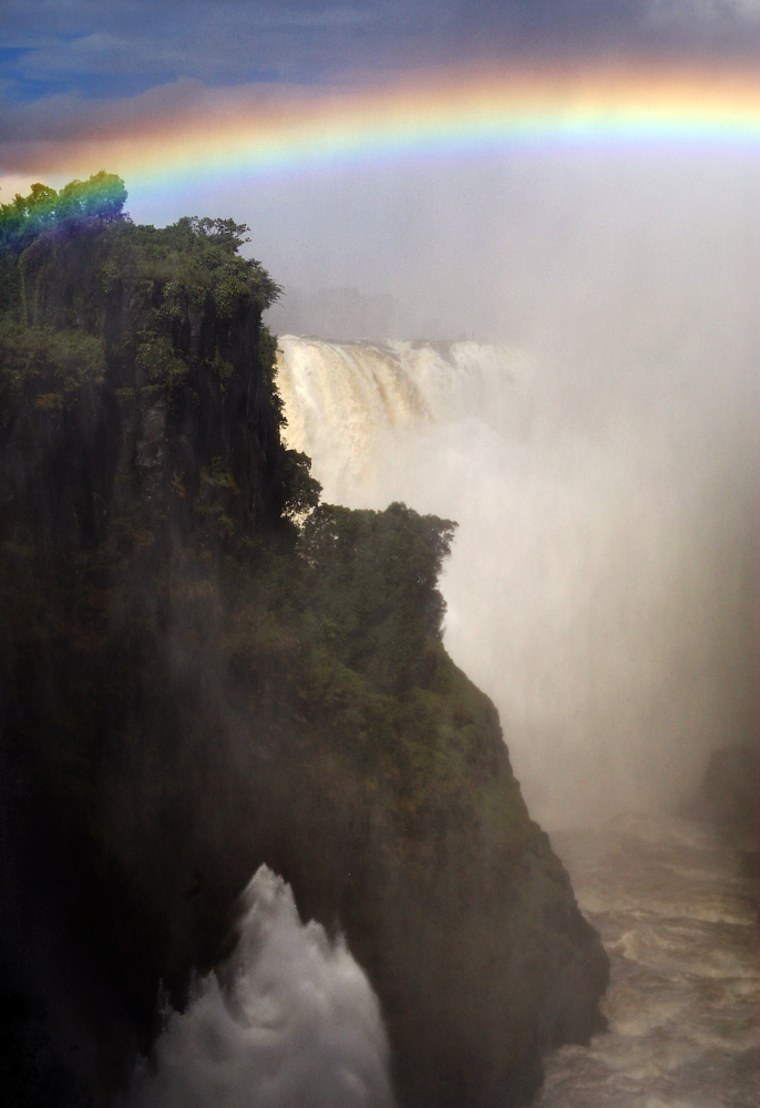
Nestled on the country's border with Zambia, the area is situated far from the political hotbed of Harare, and has been spared from the cholera outbreaks that have recently plagued other parts of the country. Visitors here come to ogle the largest waterfalls in the world (twice the height of Niagara), and for the highly accessible wildlife viewing and safaris along the Zambezi River. Adrenaline junkies can explore the terrain from atop an elephant or a white-water raft, or take things down a notch while perusing the local craft market or kicking back at colonial-style luxury lodges.
Why go in 2009: While Zimbabwe's volatile political situation understandably deters some visitors, the recent runaway inflation of the Zimbabwean dollar has translated to bargain rates and reemerging tourism in the Victoria Falls region. U.S. greenbacks spent on safari and hotels directly benefit the local economy, set well apart from the political upheaval of Harare. Instead of going on safari in South Africa, where costs can approach $1,000/night, try Zimbabwe, where the same experience is priced at half the cost and the U.S. dollar is the currency of choice. Expect five-star accommodations at three-star price tags — don't miss luxurious newcomer, Wild Horizons Sanctuary Lodge (May opening; www.wildhorizons.co.za), or the February reopening of the upscale Bumi Hills Safari Lodge (www.bumihills.com) at Lake Kariba.
(Editor's note: This article was written prior to the recent onset of violence in Israel which started Dec. 27, 2008. At this time, the U.S. Department of State has issued a travel advisory for Israel, the West Bank, and Gaza. For current information about traveling there, please consult the U.S. Department of State's Bureau of Consular Affairs' Web site at .)
